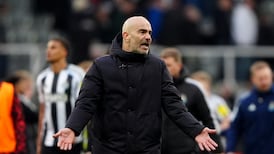When a plan comes together: Martin Ødegaard’s bumpy path to destiny
Childhood advantages enabled a head start, but obstacles still littered the road to captaining Arsenal and Norway

Join The Irish Times on WhatsApp and stay up to date
What’s making headlines in the rugby world? Listen to The Counter Ruck podcast with Nathan Johns
Sign up for push alerts to get the best breaking news, analysis and comment delivered to your phone










